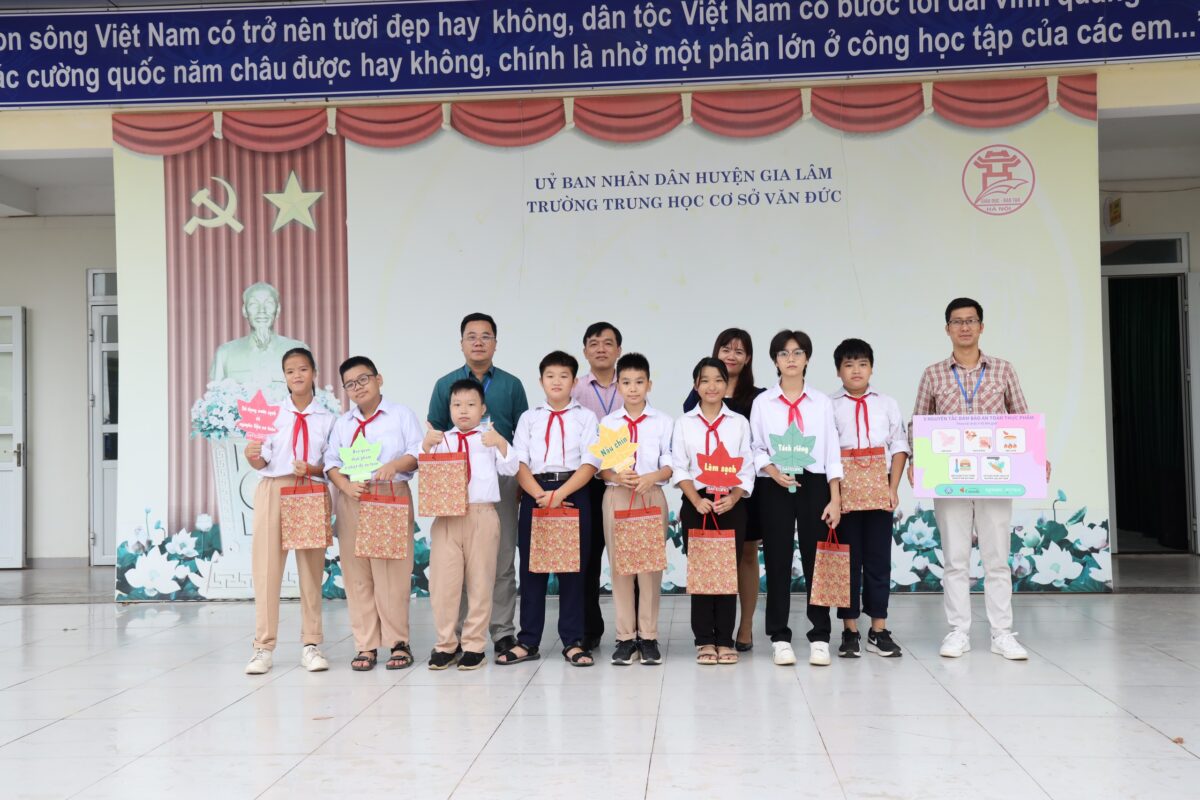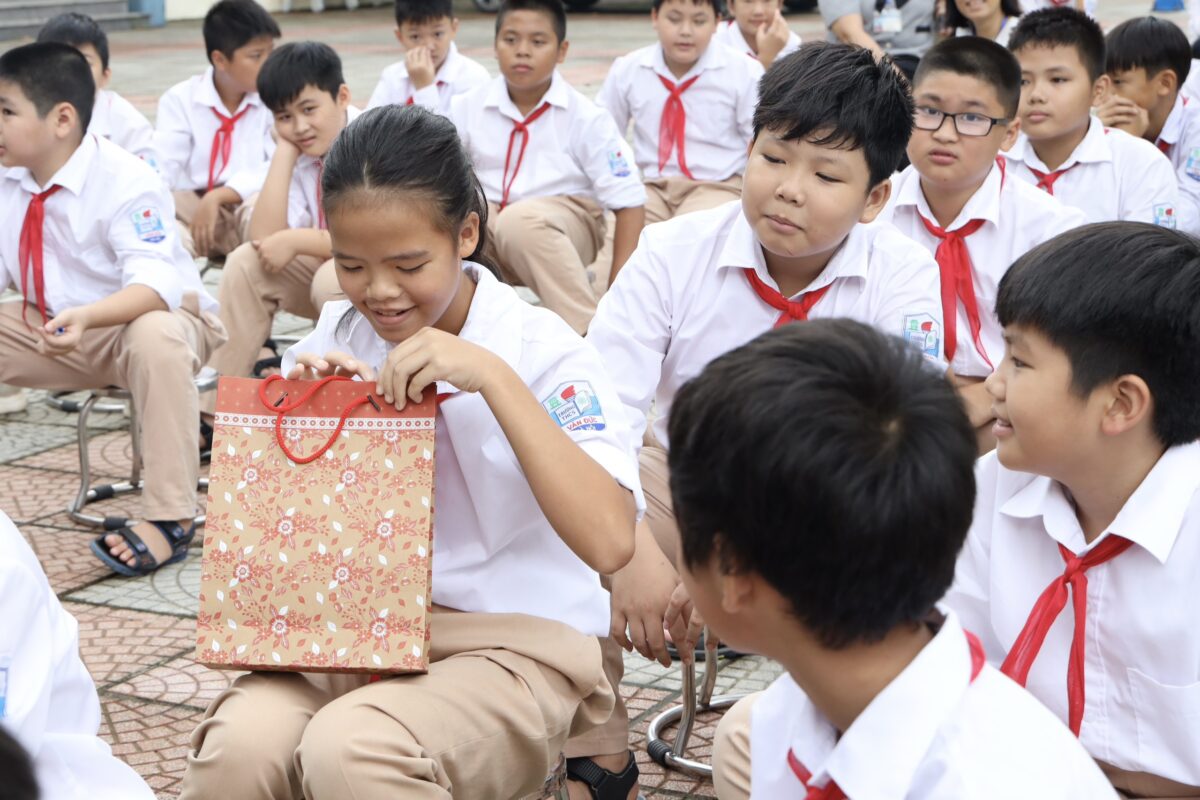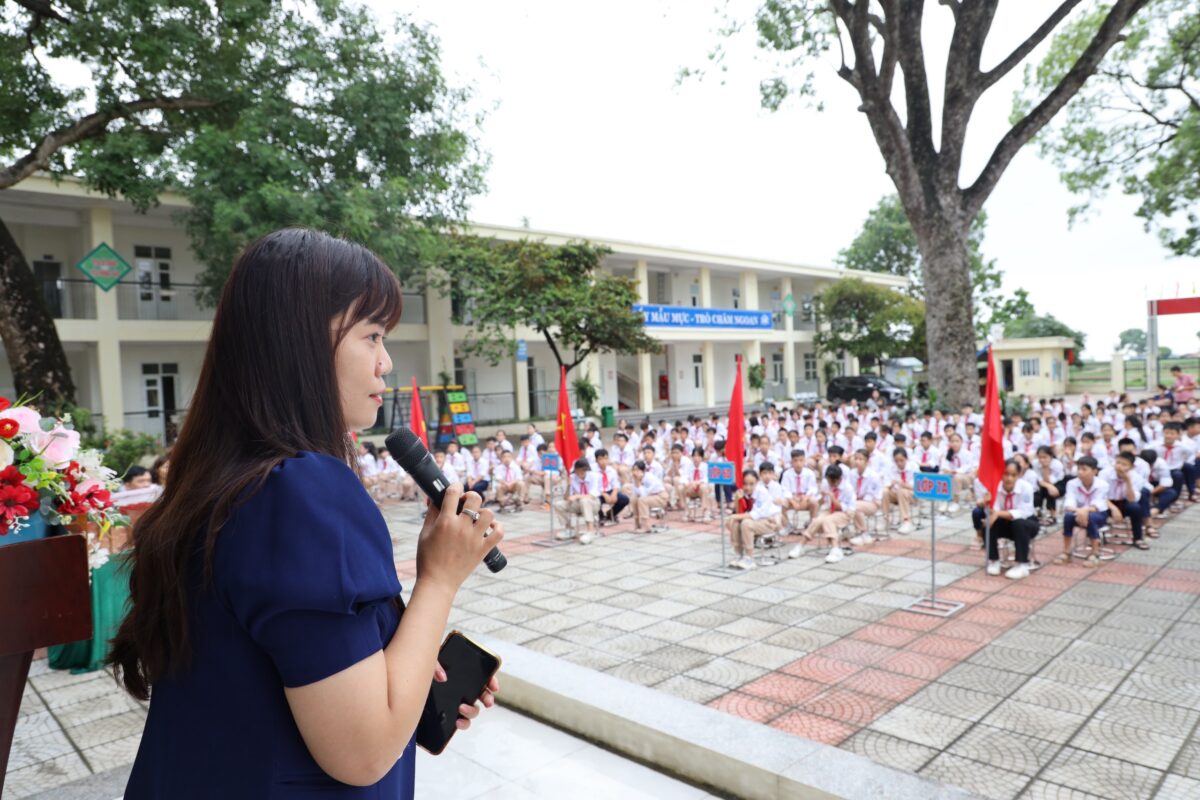A blog by Phuong Dzung, Thao Phan
– In your opinion, what foods should be kept in the refrigerator door?
– What needs to be “separated” during cooking preparation?
Who knows? raise your hand! Whoever answers correctly will get a gift!
The whole schoolyard burst into joy. The arms were raised: me, me. I know the answer!
The bustling scene just took place during the flag-raising session the Monday morning this week, at Van Duc Secondary School, Gia Lam, Hanoi.
On September 18, 2023, more than 600 pupils and teachers joined Dr. Phan Thi Phuong Thao, Project Manager of Safe Food for Growth (SAFEGRO) to interact, discuss and answer fun quizzes about food safety.
Dr. Thao introduced the pupils to the basic principles of food safety. She cited activities relevant to pupils, such as washing hands, storing items in the refrigerator, and identifying signs of properly cooked meat and fish. The information was presented not in a rigid lecture format, but rather explained using simple language. This was combined with easy-to-remember phrases written on maple leaf-shaped handouts (maple leaf is the symbol of Canada), and interactive quiz questions with rewards.
Previously, the teachers had sent the pupils reference documents on food safety (brief lectures, information in the form of stories, videos…) provided by SAFEGRO. The pupils had time to study and learn about the topic. Many pupils answered the questions correctly. Some pupils hadn’t had time to read or watch the animated video about bacteria (video link). When they heard their friends repeat the short and easy-to-remember principles, they also memorized them.
“Because the refrigerator door has an unstable temperature and is easily contaminated with microorganisms from the outside (when opening and closing the refrigerator), we should only store eggs and other foods in sealed bottles” – Phuong, pupil Class 8b answered confidently. The whole schoolyard echoed with applause.
To ensure that pupils have time to remember, think through, and completely change their habits and practices about food safety, after 10 days, the school also organized a competition to learn about food hygiene and safety. There are separate designs for different grade levels: Grades 6 and 7 compete in painting, Grade 8 compete in skits, Grade 9 compete in ringing the golden bell.
In collaboration with the SAFEGRO Project, the school management board identified the most impactful pictures and engaging skits. The chosen items were exhibited and disseminated to parents via parent-teacher groups.
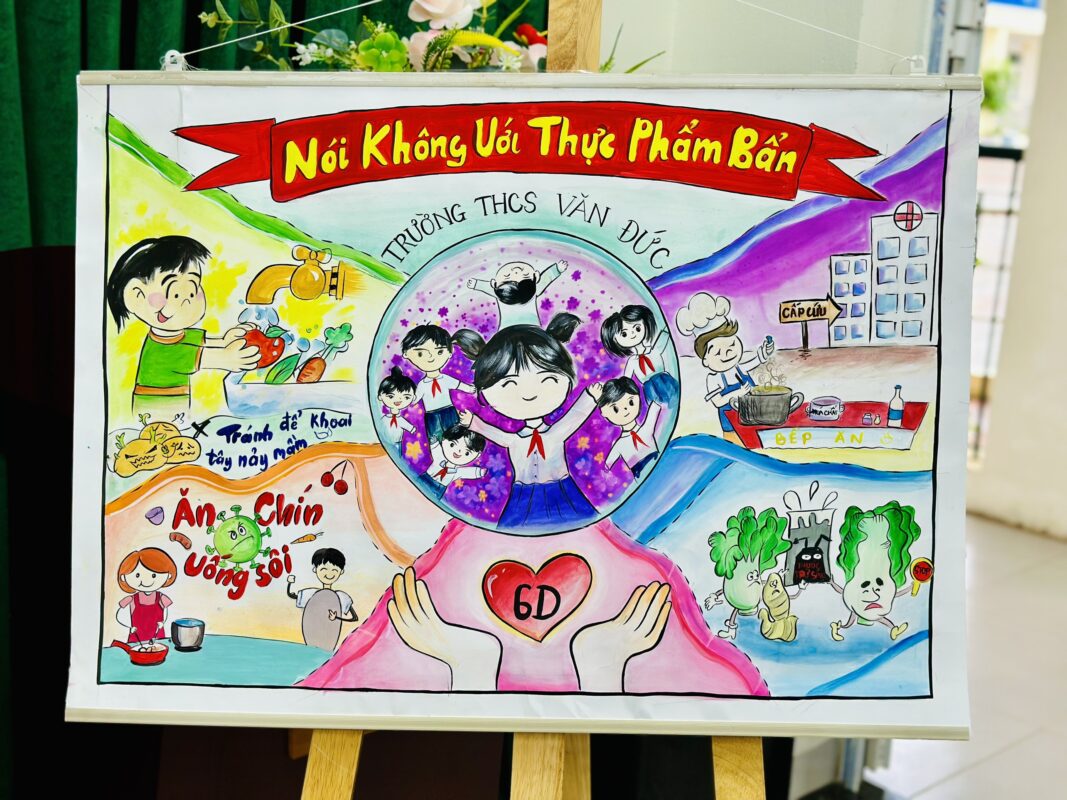 |
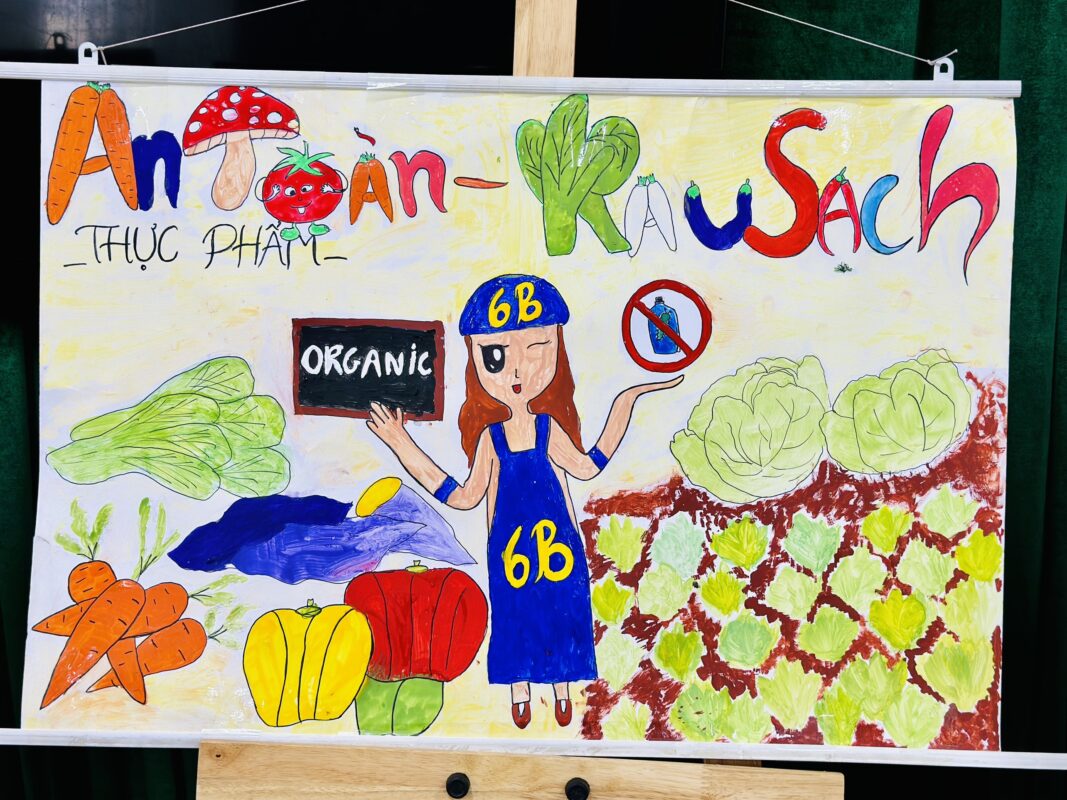 |
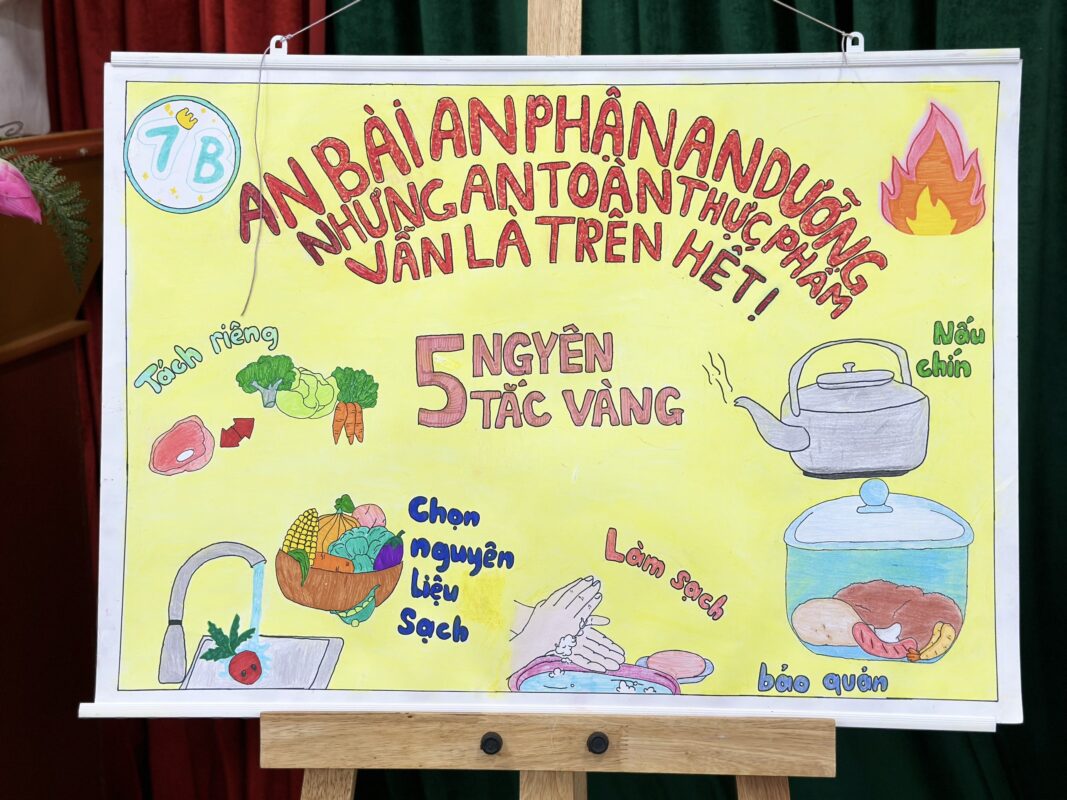 |
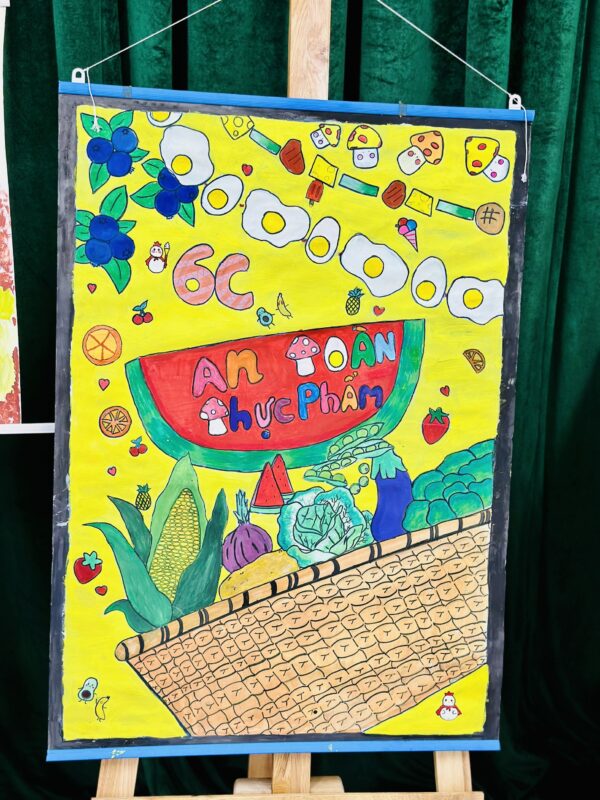 |
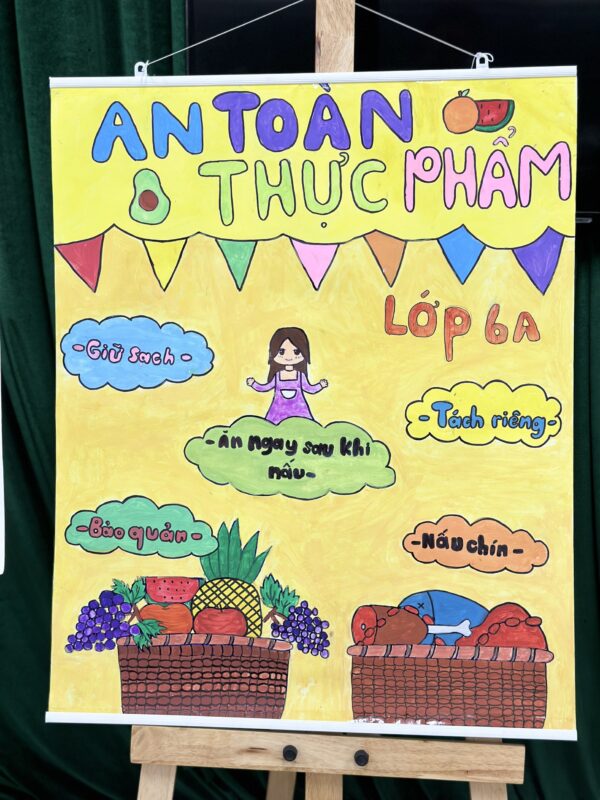 |
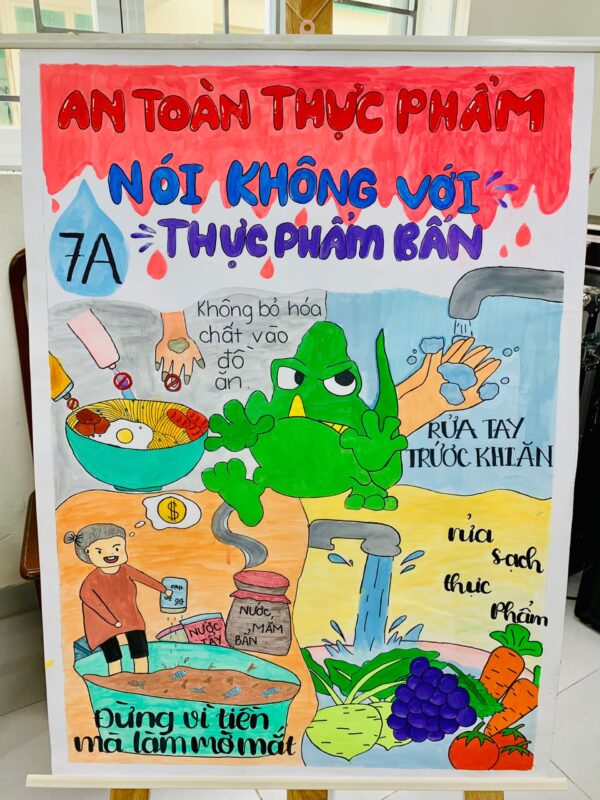 |
“We greatly appreciate the cooperation of the SAFEGRO project. I hope that pupils will always remember and practice these principles,” said Mr. Dang Minh Huy, principal of Van Duc Secondary School.
The SAFEGRO project respectfully presented the school with a poster stating five food safety principles, as recommended by the World Health Organization: Keep clean; Separate raw and cooked foods; Cook thoroughly; Keep food at safe temperatures; and Use safe water and raw materials. The poster will be positioned in the hallway, a location often visited by pupils, to ensure the message is seen multiple times and improve memory retention.
This food safety education series is a part of the gender responsive food safety community model being supported by SAFEGRO in Van Duc commune.
In total, nearly 2,000 children, teachers, and parents in all schools in Van Duc commune, the Van Duc kindergarten, Van Duc primary and Van Duc secondary schools, have taken part in Safegro’s activities in Van Duc, and their goods will spread the message even further.
Through it, SAFEGRO hopes that all pupils and teachers will become pioneers by raising their own awareness and advocating for food safety within their families and communities. By doing so, they contribute to a healthy and sustainable community.
The SAFEGRO project receives financial support from the Global Affairs Canada. It is executed in collaboration with Alinea International, the University of Guelph, and three Vietnamese ministries: the Ministry of Agriculture and Rural Development, the Ministry of Health, and the Ministry of Industry and Trade.
